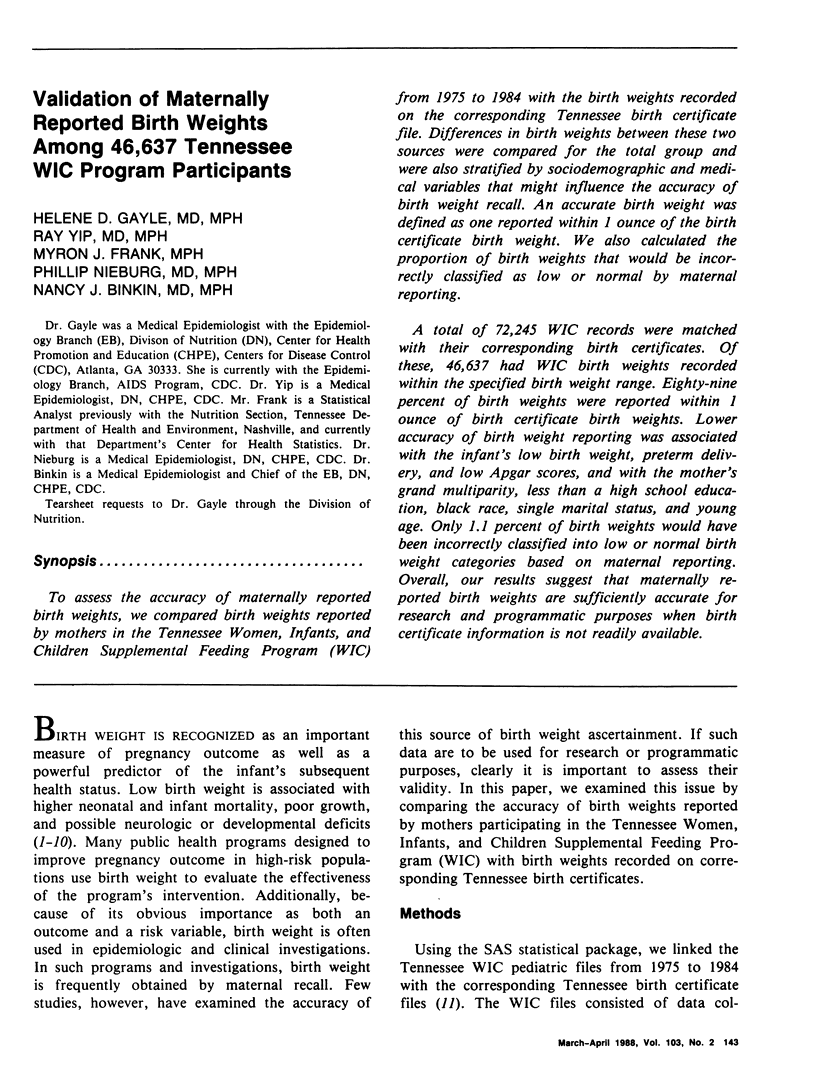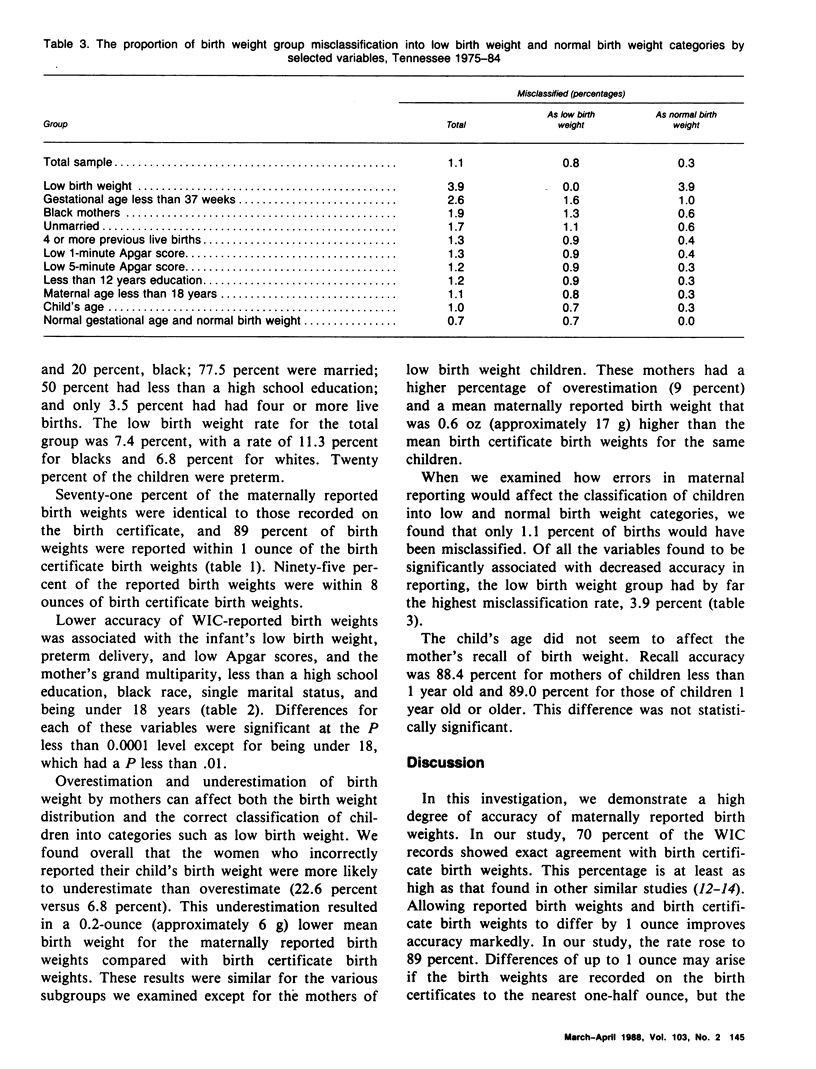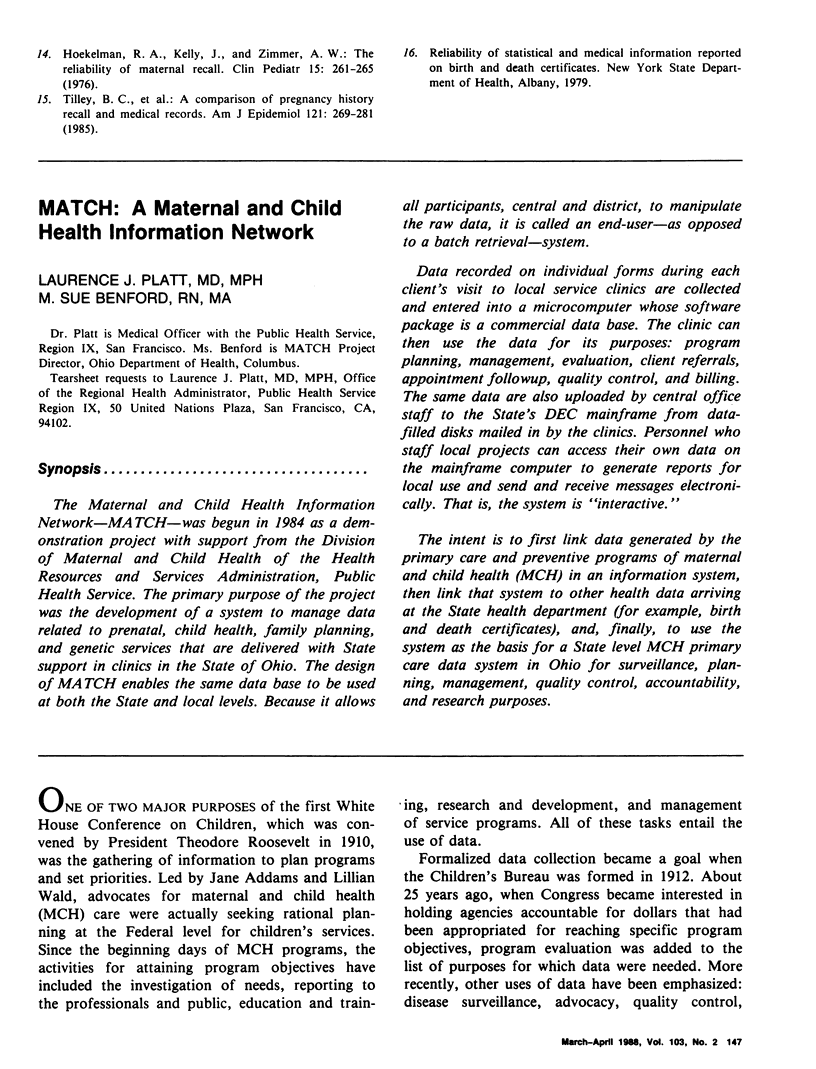Abstract
To assess the accuracy of maternally reported birth weights, we compared birth weights reported by mothers in the Tennessee Women, Infants, and Children Supplemental Feeding Program (WIC) from 1975 to 1984 with the birth weights recorded on the corresponding Tennessee birth certificate file. Differences in birth weights between these two sources were compared for the total group and were also stratified by sociodemographic and medical variables that might influence the accuracy of birth weight recall. An accurate birth weight was defined as one reported within 1 ounce of the birth certificate birth weight. We also calculated the proportion of birth weights that would be incorrectly classified as low or normal by maternal reporting. A total of 72,245 WIC records were matched with their corresponding birth certificates. Of these, 46,637 had WIC birth weights recorded within the specified birth weight range. Eighty-nine percent of birth weights were reported within 1 ounce of birth certificate birth weights. Lower accuracy of birth weight reporting was associated with the infant's low birth weight, preterm delivery, and low Apgar scores, and with the mother's grand multiparity, less than a high school education, black race, single marital status, and young age. Only 1.1 percent of birth weights would have been incorrectly classified into low or normal birth weight categories based on maternal reporting. Overall, our results suggest that maternally reported birth weights are sufficiently accurate for research and programmatic purposes when birth certificate information is not readily available.
Full text
PDF




Selected References
These references are in PubMed. This may not be the complete list of references from this article.
- Axelsson G., Rylander R. Validation of questionnaire reported miscarriage, malformation and birth weight. Int J Epidemiol. 1984 Mar;13(1):94–98. doi: 10.1093/ije/13.1.94. [DOI] [PubMed] [Google Scholar]
- Beck G. J., van den Berg B. J. The relationship of the rate of intrauterine growth of low-birth-weight infants to later growth. J Pediatr. 1975 Apr;86(4):504–511. doi: 10.1016/s0022-3476(75)80138-7. [DOI] [PubMed] [Google Scholar]
- Bjerre I. Physical growth of 5-year-old children with a low birth weight. Stature, weight, circumference of head and osseous development. Acta Paediatr Scand. 1975 Jan;64(1):33–43. doi: 10.1111/j.1651-2227.1975.tb04377.x. [DOI] [PubMed] [Google Scholar]
- Fitzhardinge P. M., Steven E. M. The small-for-date infant. I. Later growth patterns. Pediatrics. 1972 May;49(5):671–681. [PubMed] [Google Scholar]
- Fitzhardinge P. M., Steven E. M. The small-for-date infant. II. Neurological and intellectual sequelae. Pediatrics. 1972 Jul;50(1):50–57. [PubMed] [Google Scholar]
- Fledelius H. C. Inhibited growth and development as permanent features of low birth weight. A longitudinal study of eye size, height, head circumference, interpupillary distance and exophthalmometry, as measured at age of 10 and 18 years. Acta Paediatr Scand. 1982 Jul;71(4):645–650. doi: 10.1111/j.1651-2227.1982.tb09490.x. [DOI] [PubMed] [Google Scholar]
- GODDARD K. E., BRODER G., WENAR C. Reliability of pediatric histories. A preliminary study. Pediatrics. 1961 Dec;28:1011–1018. [PubMed] [Google Scholar]
- Harvey D., Prince J., Bunton J., Parkinson C., Campbell S. Abilities of children who were small-for-gestational-age babies. Pediatrics. 1982 Mar;69(3):296–300. [PubMed] [Google Scholar]
- Hoekelman R. A., Kelly J., Zimmer A. W. The reliability of maternal recall. Mother's remembrance of their infant's health and illness. Clin Pediatr (Phila) 1976 Mar;15(3):261–265. doi: 10.1177/000992287601500305. [DOI] [PubMed] [Google Scholar]
- McCormick M. C. The contribution of low birth weight to infant mortality and childhood morbidity. N Engl J Med. 1985 Jan 10;312(2):82–90. doi: 10.1056/NEJM198501103120204. [DOI] [PubMed] [Google Scholar]
- Nilsen S. T., Finne P. H., Bergsjø P., Stamnes O. Males with low birthweight examined at 18 years of age. Acta Paediatr Scand. 1984 Mar;73(2):168–175. doi: 10.1111/j.1651-2227.1984.tb09923.x. [DOI] [PubMed] [Google Scholar]
- Tilley B. C., Barnes A. B., Bergstralh E., Labarthe D., Noller K. L., Colton T., Adam E. A comparison of pregnancy history recall and medical records. Implications for retrospective studies. Am J Epidemiol. 1985 Feb;121(2):269–281. doi: 10.1093/oxfordjournals.aje.a113997. [DOI] [PubMed] [Google Scholar]
- Villar J., Belizán J. M., Spalding J., Klein R. E. Postnatal growth of intrauterine growth retarded infants. Early Hum Dev. 1982 Jul;6(3):265–271. doi: 10.1016/0378-3782(82)90120-7. [DOI] [PubMed] [Google Scholar]


